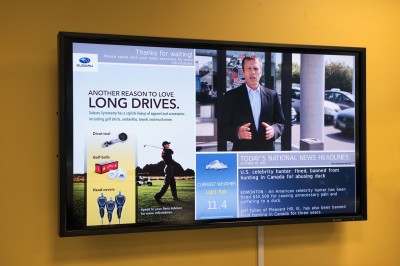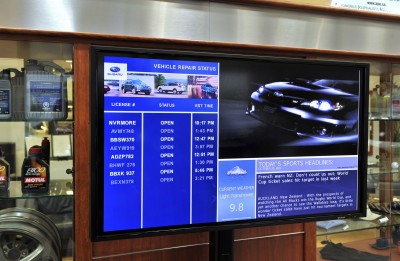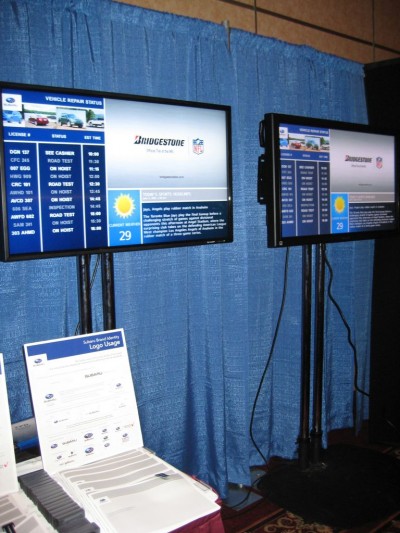Addressing challenges
When Subaru originally began planning the network in 2009, the main challenges were cost and flexibility. The dealers did not need the sleekest new technology, but rather an open system that would not tie them to any particular partner forever. This was important in terms of customizing content in an open development environment, including applications for the aforementioned service status integration, Rich Site Summary (RSS) news feeds and previously owned vehicle inventories.
Most vendors proposed their own self-developed software-as-a-service (SaaS) offerings in ways that would tie Subaru to them indefinitely, with significant costs associated with any new feature requests.
“We spent more than two years looking at various options,” says Hamin. “Having already brought our website development in-house, we wanted to maintain that freedom.”
With its project management perspective, however, 10net proposed the Scala software—because it would be a flexible platform for various screen formats, including landscape and portrait modes and both split-screen and full-screen formatting—and a server that could process multiple HD streams with no restrictions, for a true broadcast feel with no jitter. Subaru could buy and own its software licences and then use Scala’s scripting language to develop new functionality independently, as required.

Unique content is provided through both sales and after-sales service channels, in English and French.
Further, 10net suggested several cost-cutting measures, including specifying a single computer to handle the multiple streams, with Category 5 (Cat 5) twisted-pair cable for video distribution. This way, there would be no need for individual computers to be installed at each display location. Another initiative involved multiplexing two channels of audio using a single 5.1 surround-sound multi-channel audio card, which would reduce costs for analogue-to-digital (A-D) converters and other hardware.
Central management was essential in making the network as ‘hands-free’ as possible for the dealers themselves. 10net would host the network and push out content to the dealers, with the option down the road for Subaru to move all of the software, playlists and other resources to its own data centre, should circumstances governing their relationship ever change.
Specifying screens
Once this network management scenario was worked out, Subaru’s senior executives and dealers all came on board enthusiastically. They had seen customer-facing digital signage elsewhere and understood its value. Indeed, as mentioned, some dealers were already using their own digital signs.
One of the next steps was to choose the screens themselves. This decision was left until relatively late in the planning process because LCD technology had continued to evolve and drop in price.
Three options were installed in a corporate-owned dealership and evaluated throughout a full day of use. Two out of the three were then taken to an annual dealer meeting for further thoughts before making a final decision.
It proved easier to install the LCDs at new and renovated dealerships, as the walls needed to be reinforced and power cabling had to be run to the display locations. These alterations were also subject to different building and electrical codes in different provinces, so the process took some time.
Creating content
Today, Subaru’s own development team creates the content in-house, some of which is also recompressed for simultaneous use on the company’s website (www.subaru.ca) and YouTube channel (www.youtube.com/subarucanada) and ‘amplified’ through tweets on Twitter and wall posts on Facebook. Ads often debut on the digital signage network before airing on TV.
Shooting, editing and grading a video is relatively inexpensive, not only because the internal studio handles scripting and storyboarding, but also because it can turn to archives of broadcast-quality footage. Most stand-alone facilities cannot access such resources for digital signage.
“We realized we could produce high-quality HD content for less money than had been spent printing single-use point-of-purchase (POP) materials that were obsolete the moment they came off the press,” says Hamin. “Digital signage is here to stay.”
As per 10net’s promise, the team has also been able to add new functionality, including the service status integration and previously owned vehicle inventories, which repurpose photos and data sourced from www.subaru.ca. One of the next steps will be to allow dealers to upload their own static ad content. Currently, Subaru maintains this localized content at the corporate level on the dealers’ behalf.







